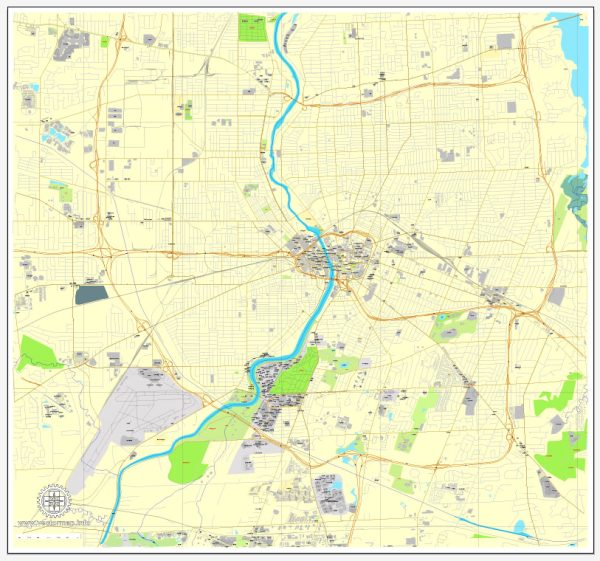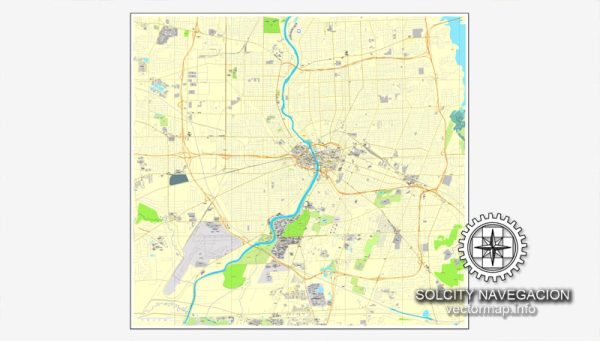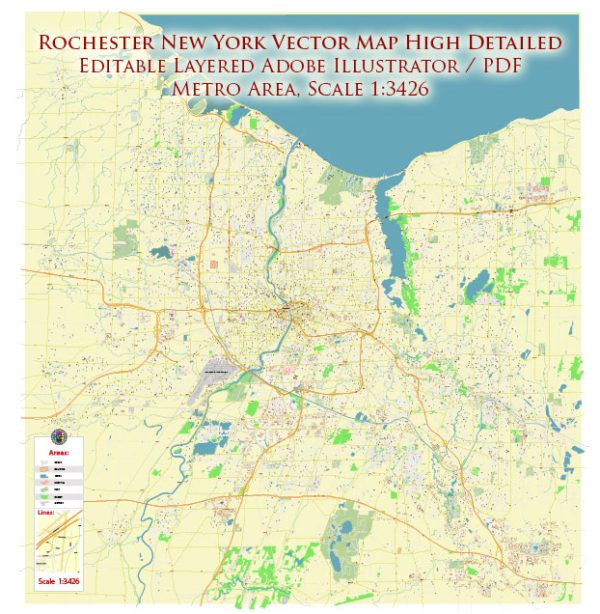Rochester, located in western New York, has a rich history of urban development that reflects the broader trends and challenges faced by many American cities. Here’s an overview of Rochester’s urban development history:
- Early Settlement and Flourishing Industries (19th Century):
- Rochester was first settled in the late 18th century and quickly became a thriving community due to its location along the Genesee River, which provided waterpower for mills.
- The Erie Canal, completed in 1825, further boosted Rochester’s growth by connecting it to the Great Lakes and the Hudson River, facilitating the transport of goods.
- Industrialization and the “Flour City” (19th Century):
- Flour mills and other industries, such as clothing and shoe manufacturing, led to Rochester being nicknamed the “Flour City” in the mid-19th century.
- The city’s economic prosperity attracted waves of immigrants, contributing to its cultural diversity.
- George Eastman and Kodak (Late 19th to Early 20th Century):
- The late 19th and early 20th centuries saw the rise of Eastman Kodak, founded by George Eastman in Rochester. This company played a significant role in the city’s industrial and economic development.
- The success of Kodak made Rochester a major player in the global imaging and photography industry.
- Urban Renewal and Decline (Mid-20th Century):
- Like many American cities, Rochester experienced urban renewal efforts in the mid-20th century. These initiatives aimed to revitalize downtown areas but often resulted in the demolition of historic structures and the displacement of communities.
- Suburbanization and the decline of traditional manufacturing industries contributed to population shifts away from the city center.
- Deindustrialization and Economic Challenges (Late 20th Century):
- The latter half of the 20th century saw the decline of manufacturing in Rochester, including the downsizing of Kodak. This led to economic challenges and job losses.
- Efforts were made to diversify the local economy and invest in education and technology.
- Revitalization and Innovation (Late 20th Century to Present):
- In recent decades, there have been efforts to revitalize downtown Rochester. Projects such as the High Falls district redevelopment and the renovation of the Eastman Theatre have aimed to breathe new life into the city.
- The city has focused on promoting education, technology, and healthcare as key sectors for growth, with institutions like the University of Rochester and the Rochester Institute of Technology playing pivotal roles.
- Challenges and Community Engagement:
- Rochester, like many cities, faces challenges such as poverty, crime, and issues related to racial and economic inequality. Community engagement and grassroots initiatives have played a crucial role in addressing these challenges.
Rochester’s urban development history reflects the broader narrative of American cities, with periods of growth, industrialization, decline, and ongoing efforts at revitalization and sustainability. The city continues to evolve as it navigates the complexities of the 21st century urban landscape.




 Author: Kirill Shrayber, Ph.D.
Author: Kirill Shrayber, Ph.D.